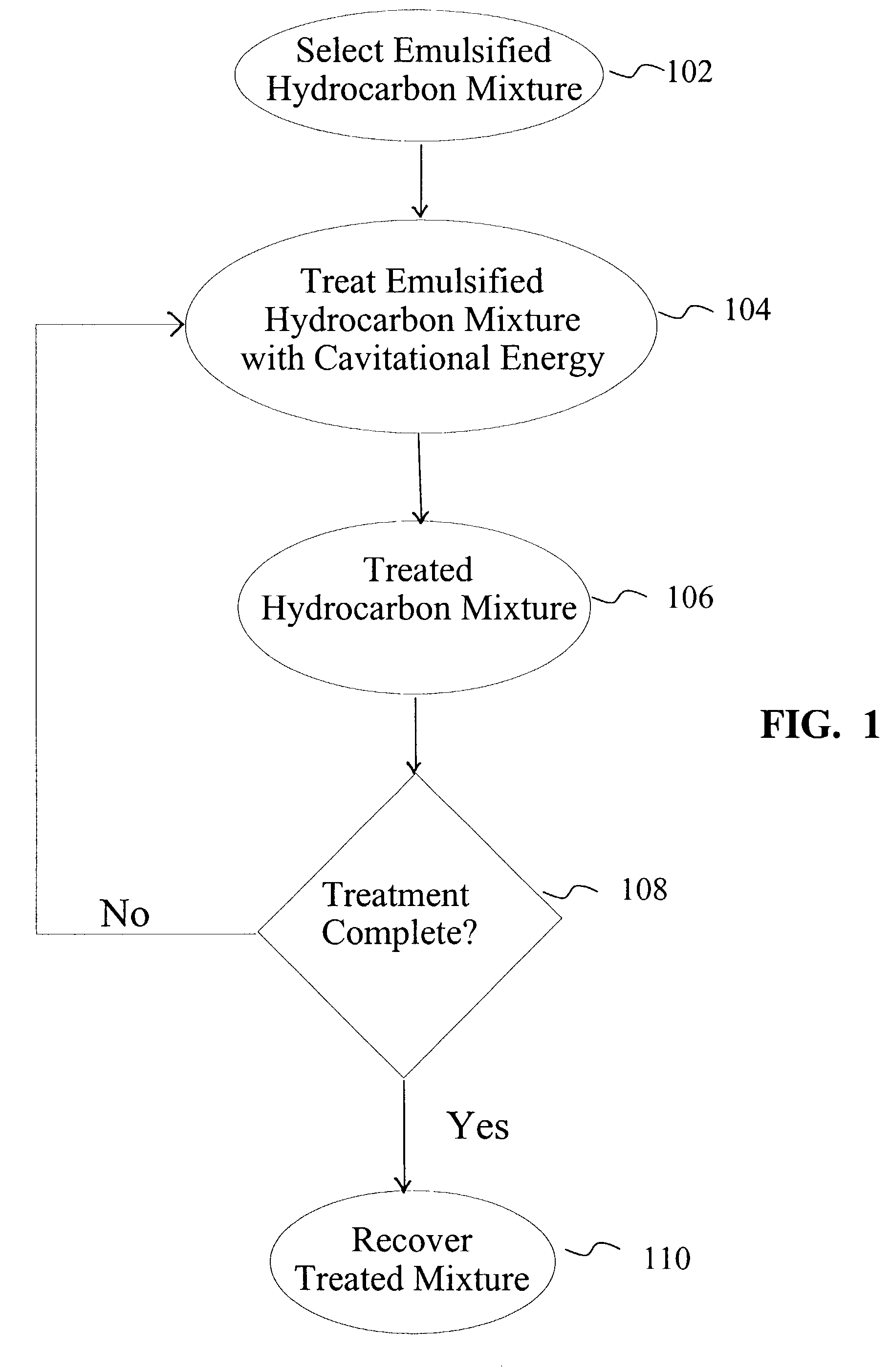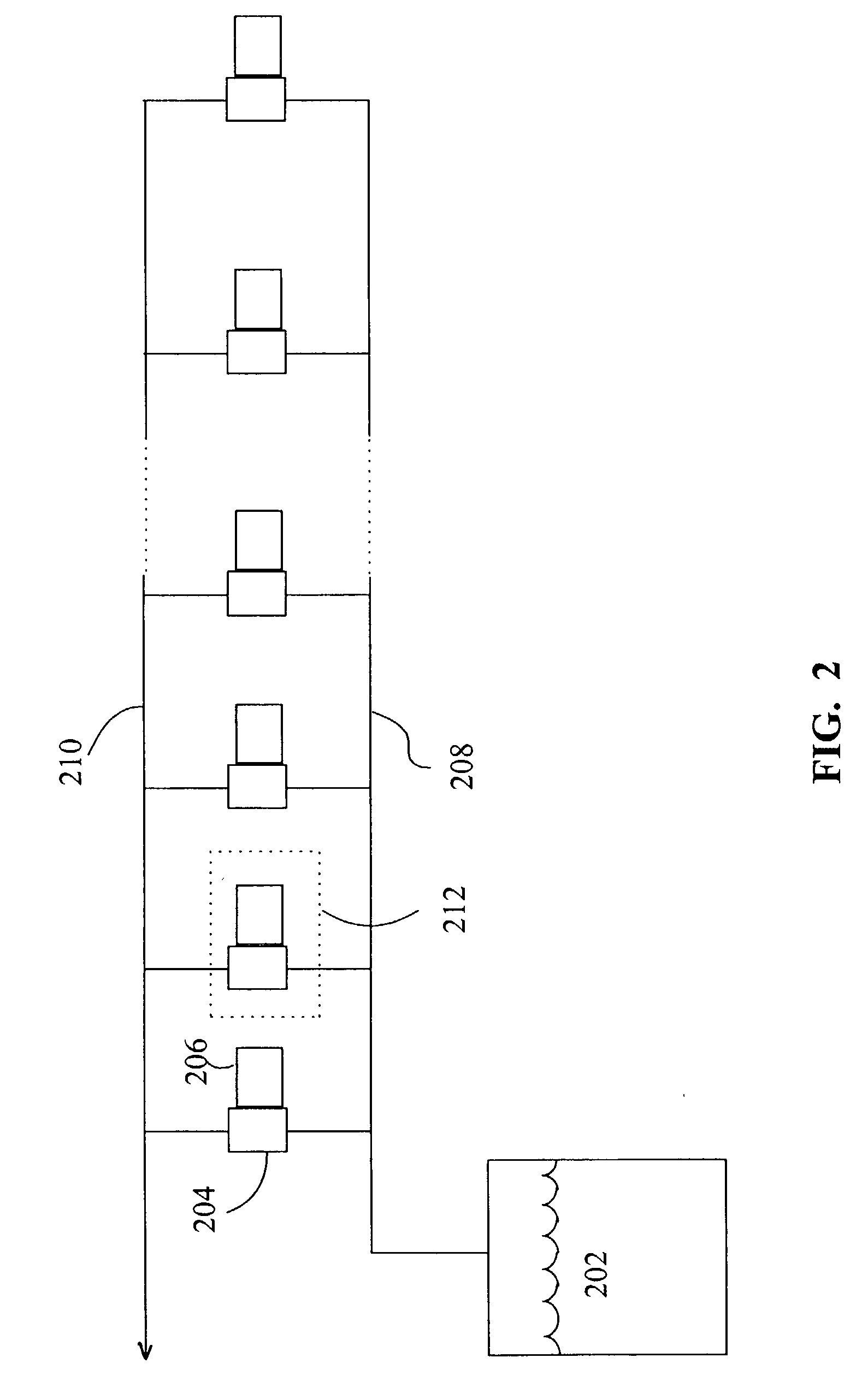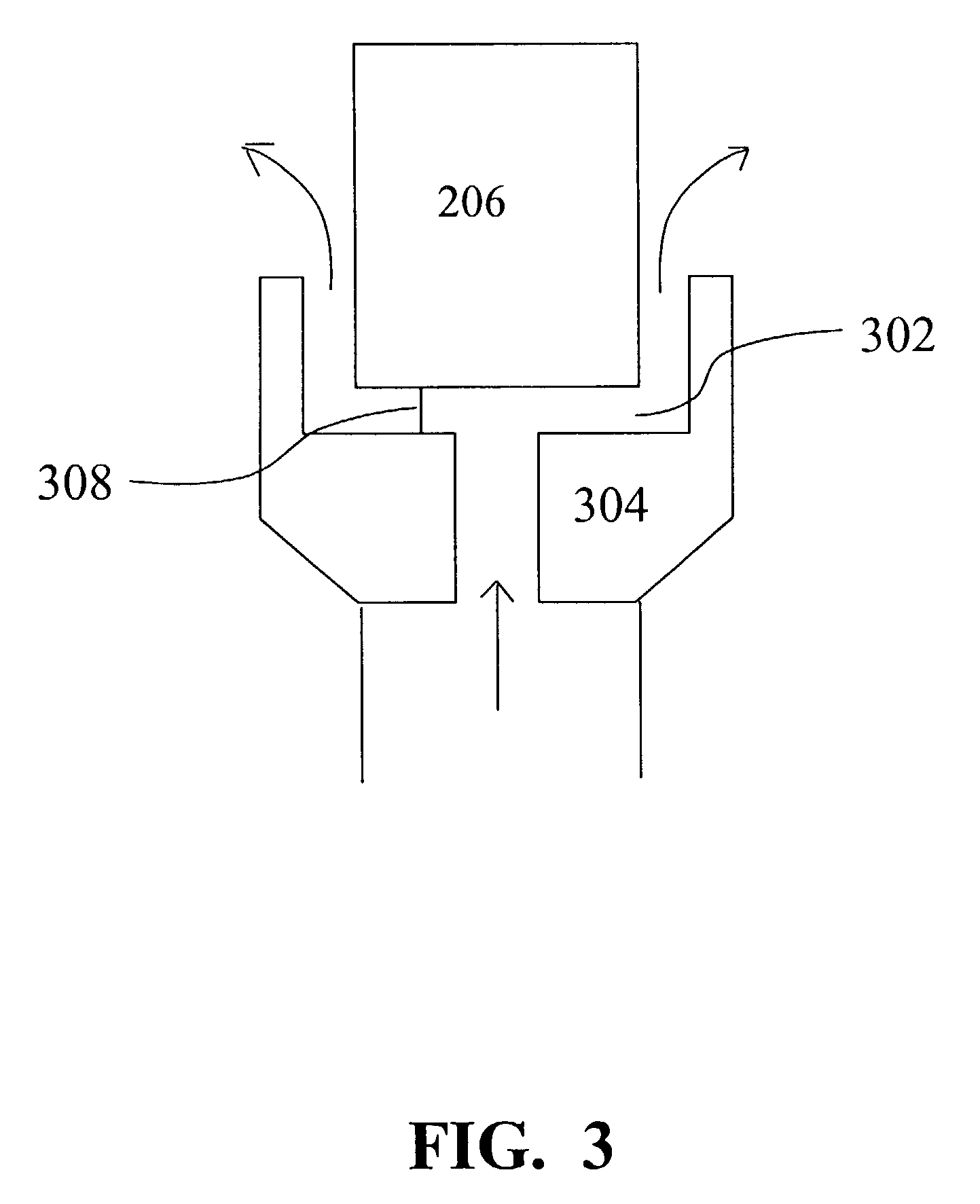Method to treat emulsified hydrocarbon mixtures
- Summary
- Abstract
- Description
- Claims
- Application Information
AI Technical Summary
Benefits of technology
Problems solved by technology
Method used
Image
Examples
example 2
[0054] A sample of used motor oil was tested for initial ASTM D-86 Atmospheric Distillation values as shown in Table 4. The sample was continuously fed through an ultrasonic processing system, similar to the arrangement shown in FIG. 3. The table shows results at various flow rates and with and without the U-shaped flow tube. The sample was then re-tested for ASTM D-86 Atmospheric Distillation results which are shown in Table 4.
4TABLE 4 ASTM D-86 Atmospheric Distillation Results (.degree. F.) % No U-shape Flow tube U-shape Flow tube Recovered No processing 3 gpm 5 gpm 5 gpm 10 gpm Initial 330 318 324 311 330 boiling point 5% 485 370 477 379 399 10% 660 455 595 462 448 20% 710 542 657 591 557 30% 732 588 702 627 605 40% 740 612 716 650 638 50% 762 622 727 663 656 60% 812 628 735 681 663 70% 840 638 696 692 80% 868 655 718 725 90% 914 95% 950
[0055] These results show a very significant increase in the yield of fractions boiling under 670.degree. F. The untreated used motor oil under 7...
example 3
[0056] A 100 ml sample of #6 fuel oil emulsified with water was tested for initial ASTM D-86 Atmospheric Distillation values as shown in Table 5. A gallon of the fuel oil was then placed in a continuous flow test bed where cavitation was then introduced by the ultrasonic horn into the sample. The sample was then re-tested for ASTM D-86 Atmospheric Distillation results which are shown in Table 5.
5TABLE 5 ASTM D-86 Atmospheric Distillation Results (.degree. F.) % Recovered Before cavitation After cavitation Initial boiling point Would not distill 286 5% 375 10% 480 20% 564 30% 592 40% 610 50% 620 60% 629 70% 650 80% 660 @ 71%
[0057] These results show a significant increase in the yield of fractions boiling under about 660.degree. F. The treatment resulted in a dramatic reduction of the emulsion and improved yields of lower boiling point distillate from a #6 fuel oil.
[0058] The test data from these multiple examples supports the following conclusions. First, ultrasonic cavitation treat...
PUM
 Login to View More
Login to View More Abstract
Description
Claims
Application Information
 Login to View More
Login to View More - R&D
- Intellectual Property
- Life Sciences
- Materials
- Tech Scout
- Unparalleled Data Quality
- Higher Quality Content
- 60% Fewer Hallucinations
Browse by: Latest US Patents, China's latest patents, Technical Efficacy Thesaurus, Application Domain, Technology Topic, Popular Technical Reports.
© 2025 PatSnap. All rights reserved.Legal|Privacy policy|Modern Slavery Act Transparency Statement|Sitemap|About US| Contact US: help@patsnap.com



